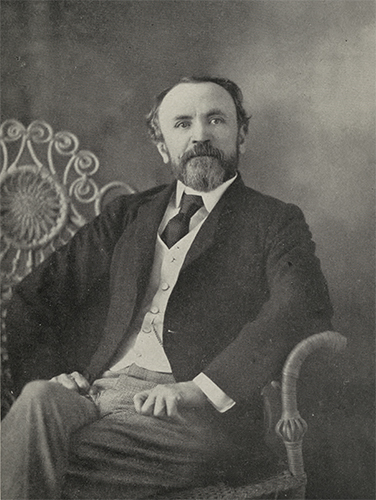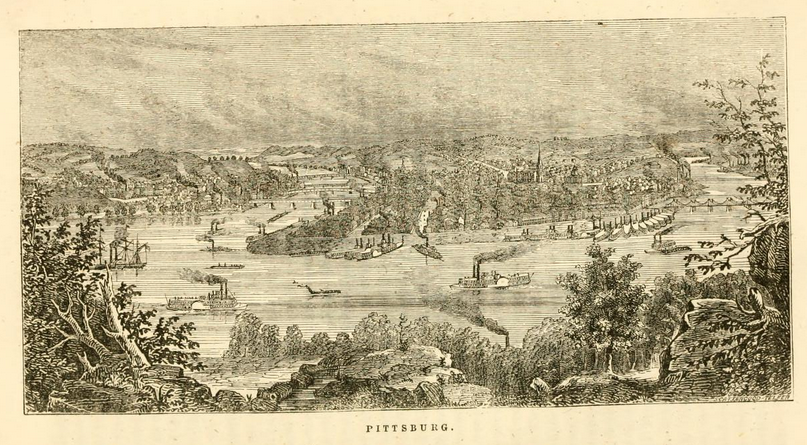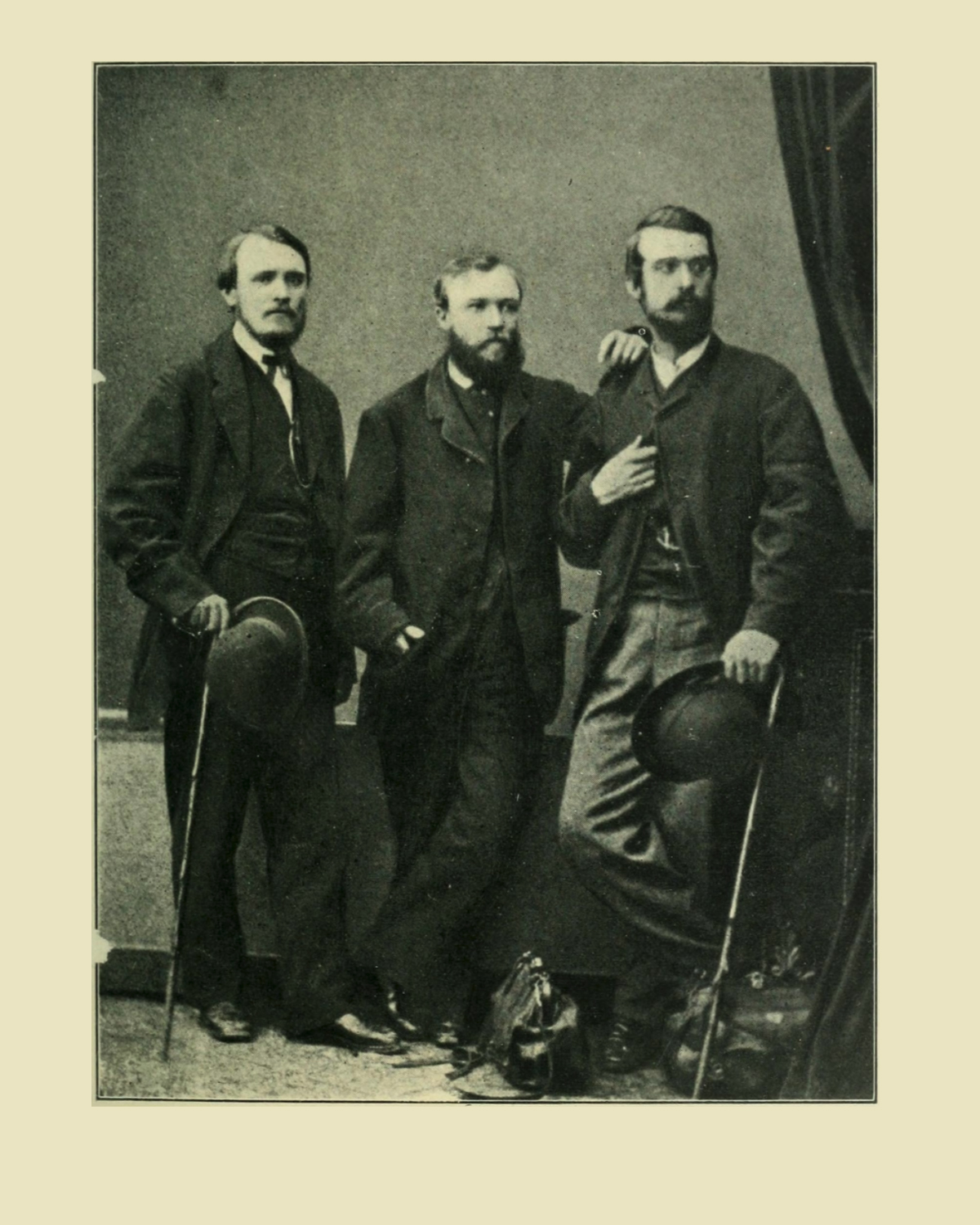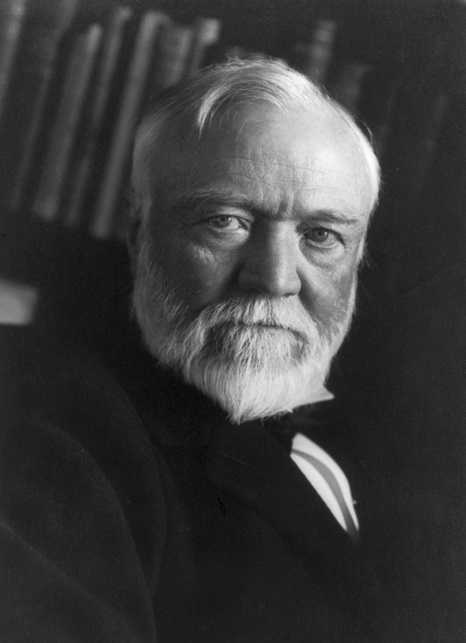Henry Phipps, Jr.
 Henry Phipps, Jr.
Henry Phipps, Jr.
 Pittsburgh in 1854, from The Pictorial Sketch-Book of Pennsylvania by Eli Bowen.
Pittsburgh in 1854, from The Pictorial Sketch-Book of Pennsylvania by Eli Bowen.
Early Life
Steel pioneer and philanthropist Henry Phipps, Jr. (1839-1930) was known during his lifetime for his business association with industrialist Andrew Carnegie, and for his many philanthropic projects.
Son of an English shoemaker, Phipps was born in Philadelphia and moved to Pittsburgh in 1845 with his family. Growing up in Allegheny City (North Side), he became friends with brothers Andrew and Thomas Carnegie when the Carnegie family emigrated from Scotland in 1848. The Phipps family lived at 340 Rebecca Avenue, and the Carnegies were just two doors away at 336 Rebecca. Phipps' father gave piece work to Margaret Carnegie, who stitched to supplement her family's meager income.
Ambitious boys from working-class families, Henry Phipps and the Carnegie brothers started working by their early teens. Andrew Carnegie’s first job was as a bobbin boy in a cotton mill. Phipps sold newspapers and, at age thirteen, worked in the jewelry store of Stephen Barton for $1.25 a week.
Phipps then got a job as an office boy in the firm of Dilworth & Bidwell, sellers of iron and spikes. He took night courses in accounting and was promoted to bookkeeper. He was still working at Dilworth & Bidwell in 1859 when an opportunity came his way via a friend, railway purchasing clerk Thomas Miller, who knew the owner of a local iron forge that was expanding and in need of investors. The young Phipps did not have the necessary cash, but in an arrangement that swapped partial future earnings and bookkeeping work for the investment stake, Phipps became part of the Kloman Brothers enterprise.
Phipps didn't resign from Dilworth & Bidwell but instead worked both jobs, walking three miles daily between the two firms followed by another long walk home to his father's house.
Partnership with the Carnegies
As a partner in Kloman & Phipps iron mill, Henry Phipps was instrumental in bringing the Carnegie brothers into the iron business. In May 1865, right after the end of the Civil War, the three of them organized Union Iron Mills by merging Kloman & Phipps and the Carnegies’ Cyclops Iron Company.
Phipps and Andrew Carnegie, along with friend John Vandervort, then headed overseas to explore the arts and culture of Europe. Carnegie was profoundly moved by his first taste of many classics, such as hearing Handel performed in London's Crystal Palace. The knapsack excursion was not, however, exclusively a sightseeing adventure. With an eye toward business, Carnegie was on the lookout for advancements in steel rail production.
When Phipps and Carnegie returned to Pittsburgh, their work and financial fortunes were entwined for the next thirty-plus years. Phipps and the Carnegie brothers were partners in the firms Lucy Furnace Company, Carnegie Brothers & Company, and Carnegie, Phipps & Company, Limited (incorporated in January 1886).
When the Carnegie Steel Company was formed in 1892 with capital of $25 million, Andrew Carnegie was the largest stockholder with $13.8 million. Henry Phipps, Jr. and Henry Clay Frick held the next largest portions of stocks, with $2.75 million each. Frick became chairman of the new company.
 Henry Phipps, Andrew Carnegie and John Vandervort in England, 1865.
Henry Phipps, Andrew Carnegie and John Vandervort in England, 1865.
 Andrew Carnegie c. 1912. The steel magnate was a childhood friend of Henry Phipps. Their business association produced a fortune for both men. Photo courtesy of the Library of Congress.
Andrew Carnegie c. 1912. The steel magnate was a childhood friend of Henry Phipps. Their business association produced a fortune for both men. Photo courtesy of the Library of Congress.
Philanthropy
The sale of Carnegie Steel Company in 1901 to the United States Steel Corporation was one of the largest business deals of its era. The purchase price was $400 million. Henry Phipps, Jr. netted around $48 million from the transaction. Phipps retired from the business world, moved to New York City and devoted more than $20 million of his fortune to philanthropy.
Phipps’ notable charitable contributions had started more than a decade earlier, when he took an interest in Pittsburgh's public spaces and donated to improve the city's parks, gardens and playgrounds. In 1892 and 1893, he gifted Phipps Conservatories to the Cities of Allegheny and Pittsburgh, respectively. Phipps insisted that the conservatories be open on Sundays so they could be enjoyed by working-class families.
In 1903, his $1,000,000 grant helped found the Henry Phipps Institute in his city of birth, Philadelphia. The institute was dedicated to the prevention and treatment of tuberculosis, one of the leading causes of death in the U.S. in 1900. Phipps funded a similar research institute in Baltimore.
Phipps was married for 58 years to Anne Childs Shaffer. They had two daughters and three sons, one of whom bore “Carnegie” as his middle name. The Phipps clan had homes on Long Island in New York. Henry Phipps, Jr.’s estate, Bonnie Blink, was completed in 1919 and was where he and his wife spent their summers in their final years.
Henry Phipps opened a savings account at Dollar Bank in February 1859.
